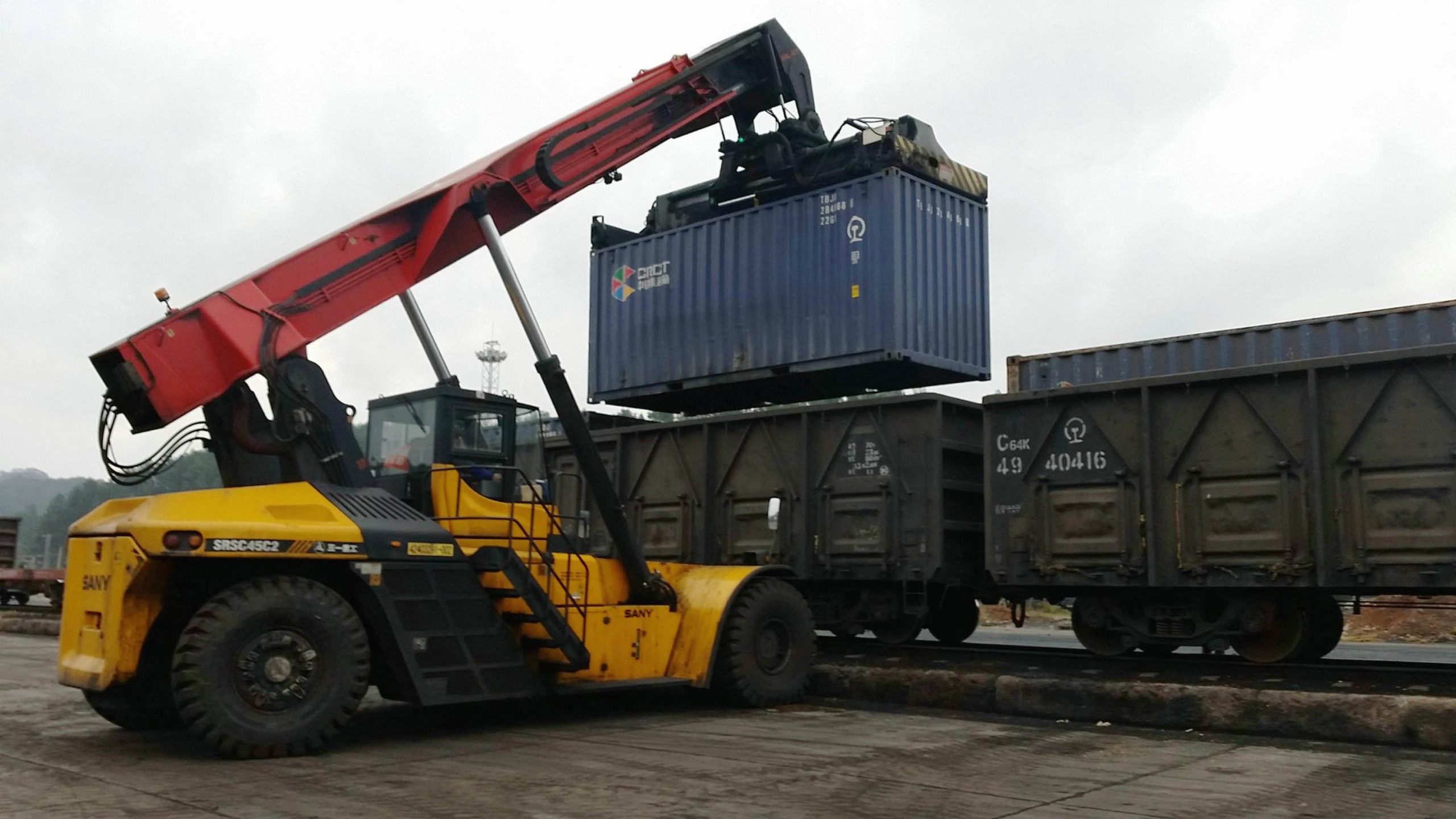How long will the shortage of containers last?

- Date: Nov 17, 2020
- Comments: no comments
- Categories: News
“It’s hard to get the cabin, but I can’t find the container!” Recently, the container transportation market is extremely hot, and the problem of lack of containers is very prominent. Maersk, the world’s largest container shipping company, also stated that due to the booming Pacific market, there has been a shortage of containers in the market for several months, especially the 40-foot-long large containers.
Data shows that for 4 consecutive months, my country’s import and export trade has accelerated growth, the container throughput of major ports rebounded from the bottom, the demand and price of containers have also risen sharply, and the situation of “one container is hard to find”.
Container demand surges
At present, there are not enough empty containers to meet the freight demand. The shipping company Hapag-Lloyd said that at present, the shortage of containers is mainly related to the global container fleet reaching a new level. More specifically, currently 70% of the world’s containers are loading goods or are transporting goods.
Moreover, according to industry demand, with the gradual resumption of work in Europe and the United States and lifting of the ban, port container trade is gradually recovering. In addition, during the epidemic, ports around the world cannot operate normally, and the return of containers scattered around the world is not smooth. Hard to find the case.
It is understood that previously, container shipping companies canceled trans-Pacific trade voyages, and cargo imports from Asia to Europe in July and August also surged as the blockade eased. These factors made it difficult for shipping companies to ship containers back to Asia, causing Asian ports. The availability of containers has dropped sharply, while some US and European ports are facing increased stay time and port congestion.
Some market sources also revealed that the continued strong consumer demand in North America has caused the U.S. imports of goods to continue to rise this year. In addition, trade imbalances, port congestion, lack of manpower such as dock workers and truck drivers have led to shortages in the container transportation market. The main factor of the box.
According to data, the trend of container throughput and import and export volume is highly consistent. In September, it was 24.53 million TEUs, an increase of 7.63% year-on-year. It was also a positive growth for 4 consecutive months from June to September, and the bottom rebound trend was obvious. After entering October, the container throughput has a trend of further acceleration.
The data released by the China Ports Association also shows that the container business of the coastal ports under key monitoring has further accelerated. In October, the container throughput of the eight major hub ports increased by 11.1% year-on-year, and the growth rate hit a new high this year.
From the perspective of export volume, my country’s container export volume has rebounded rapidly since July. Compared with the export volume of 11,000 in July, the export volume in September reached 23,000, which has more than doubled.
According to Hapag-Lloyd, there seems to be no sign that this situation will change. “We believe that managing the availability of containers will remain a challenge in the coming months.”
Lack of boxes causes freight rates to rise
Industry leader CIMC said that the demand in the container market has increased significantly recently, and the company’s container orders have been scheduled to around the Spring Festival next year. Since August this year, the demand and price of containers have risen sharply.
Under the boost of demand, the price of new containers has also risen. Data show that in September 2020, the average export price of my country’s container was 3,803.75 US dollars per unit, an increase of more than 400 US dollars from March, an increase of about 22%.
At the same time, the shortage of containers has also driven the container manufacturing industry to heat up. Market participants pointed out that China is the main producer of containers in the world, and the orders of Chinese container manufacturers have been scheduled until January or even February and March next year.
Not only that, in India, due to the shortage of containers, shipping rates are also increasing. According to statistics, since March this year, local shipping companies have increased freight rates on almost all trade routes by 50%-60%. What has caused even greater trouble for Indian shippers is that there is a clear shortage of containers across the country, especially In the case that multiple containers are required for one booking. Especially in recent months, the decline in India’s imports, delays in the repositioning of containers returning from Western countries, and congestion in the regional transshipment center Colombo have all exacerbated this problem.
It is difficult for the U.S. line to increase the price due to the intervention of the Ministry of Transportation, but it is not uncommon for the shipper to increase the price automatically. The purchase price of the cabin has been from 950 to 1,250 U.S. dollars. Because of the skyrocketing freight rate, shipping companies have refused to accept the goods for many return trips. Return to Asia with empty containers at full speed.
According to the data, as of October 9th, the freight rates of Shanghai’s exports to the US West and East US basic ports were US$3,848 and US$4,622 per container, respectively. The freight rates of the US-Western route hit a new high since the release in 2009, compared with 3 At the beginning of the month, the price of each container at US$1,361 has nearly tripled.
The shipping industry pointed out that the rising epidemic in Europe and America has caused a shortage of labor, cars, and frames in ports. The on-time rate of ships dropped from 85-90% in June to 56% in September. The average delay of shipping schedules was five days and was on time. The rate of waiting for ports on the west coast of the United States is currently 4-5 days. Although the epidemic control situation in Australia and New Zealand is better, the terminals are still congested due to various controls. For example, the waiting time in Auckland exceeds 10 days, and the UK charges Listow has announced the suspension of empty containers due to Port Sai.
In order to catch up with the shipping schedule and to transport the European and American empty containers back to Asia for export as soon as possible, shipping companies have tried their best not to take back the cargo, especially the cargo from the US inland to Asia, which is the US grain in the peak season. Because it takes about two weeks for containers to enter and exit the inland, and the grain is heavy cargo, which affects the loading of ships, German Hapag-Lloyd publicly announced the suspension of the collection. Although other companies have not announced it, most of them actually reject it.
According to the analysis of the industry, the freight rate for goods shipped from the United States to Asia is mostly only 400 to 500 US dollars per large container (40TEU), while the freight rate for goods shipped from Asia to the West of the United States is more than 3,800 US dollars per large box and more than 4,600 US dollars for the eastern United States. In the current freight rate structure, the shipping company naturally abandons the return cargo. If the return cargo is received, the load will be reduced to about 70%, and the speed will also slow down. Now the return journey is sailing at full speed with empty containers. The time is shortened from 13 days to 11 days.
On the other hand, due to lack of space and containers, the shipper voluntarily increases the fare to obtain the guaranteed space of the shipping company in order to ensure that the goods are delivered on time. The price of buying space for the U.S. line is between US$950-1,250 per large box; according to reports, the shipper must also It will only be accepted if you voluntarily send MAIL to the shipping company to request a fare increase.
Starting on the 6th of this month, Shenzhen Port and Wanhai Shipping have begun to charge US$500 per box for goods shipped to Southeast Asia, and a shortage of US$1,000 per large box, which is equivalent to more than double the freight rate; Maersk , Mediterranean Shipping and CMA CGM, etc., imposed a terminal congestion surcharge of US$200 to US$300 on containers shipped to New Zealand, including Taiwan, in East Asia. Because shipping companies are bound by antitrust laws and cannot take joint price increases, each company has different names and different price surcharges.
In order to make up for the losses caused by the increase in operating costs, many shipping companies issued notices and began to charge various surcharges. According to incomplete statistics, more than 10 surcharges will be levied in November.
Redistribute or order more containers
55% of the containers in the global liner fleet are produced by leasers such as Textainer and Triton, who lease the containers to customers, namely shipping companies.
Textainer said that before mid-February next year, the supply and demand situation of containers is still difficult to restore balance, and the shortage of containers will continue until after the Spring Festival in 2021. “Container production cannot keep up with the sudden increase in demand. The maximum monthly output of Chinese container manufacturers is about 300,000 TEU, and the factory is already operating at full speed.” Philippe Wendling said.
Hapag-Lloyd said, “We have to relax business opportunities accordingly.”
In this regard, the forecast of the leasing company clearly indicates the direction of the market. The remaining 45% is purchased directly from the manufacturer by the shipping company. Wendling explained that rising prices have pushed up the prices at which manufacturers sell boxes. They usually charge a fee of around $2,000/TEU, which also makes the lessor’s contract cost higher.
DHL logistics company raised the issue of providing enough containers for the routes between Asia and Europe. This is because the container liner company has redistributed many empty containers for deployment between China and North America. Due to the current high freight rates, each container is very profitable on these routes.
Hapag-Lloyd has also been working hard to find a solution to the problem and redistribute the containers to the places where they are most needed. However, this effort has been delayed because it takes 6 to 10 weeks for the ships to recover from the Far East and other places to reach their destination-carrying cargo and surplus empty containers.
It is worth noting that the shortage of containers combined with port congestion is another obstacle to the repositioning of the boxes, causing shippers and freight forwarders to criticize the services provided by the carriers. At the same time, due to various reasons, the gap between container production and demand is still large. The annual output of containers in 2019 is 2.5 million TEUs. This may sound like a lot, but it actually only covers the number of lost or scrapped containers, or the number of old containers sold for storage and other purposes.
Dominique von Orelli, head of global shipping at DHL Global Forwarding, also pointed out, “Some shipping companies are currently unloading container equipment from Asia-Europe routes and intra-Asia routes in order to deploy them to a certain extent in trans-Pacific and Latin America. Revenue routes. Based on this, we have observed a shortage of containers in Asia-Europe routes and delays in some regions.”
But it is worth mentioning that due to the impact of the epidemic, the production capacity of container manufacturers has declined, which is greatly detrimental to the strong market demand. However, the manufacturing cycle of containers is relatively short. It usually takes only six to eight weeks from order to delivery, which means that the market can more easily correct itself. At the same time, as the current supply of containers is in short supply, Hapag-Lloyd has further invested in new containers and leased containers to prepare for the reversal of the new crown pneumonia epidemic.







No Comments Yet.